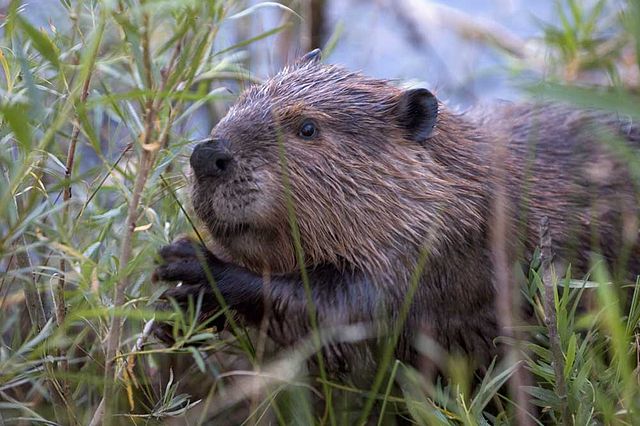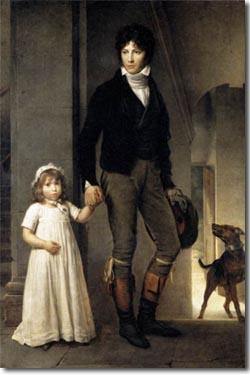In the Pink: Dressing for a Fox Hunt
He told her of horses which he had bought for a trifle and sold for incredible sums; of racing matches, in which his judgment had infallibly foretold the winner; of shooting parties, in which he had killed more birds (though without having one good shot) than all his companions together; and described to her some famous day's sport, with the fox- hounds, in which his foresight and skill in directing the dogs had repaired the mistakes of the most experienced huntsman, and in which the boldness of his riding, though it had never endangered his own life for a moment, had been constantly leading others into difficulties, which he calmly concluded had broken the necks of many. Northanger Abbey
Modern foxhunting is not as ancient as some people might think. It was mainly developed by Hugo Meynell, Master of the Quorn Hunt between 1753 and 1800.

The earliest known attempt to hunt a fox with hounds was in Norfolk in 1534, where a farmer used his dogs in an attempt to catch a fox. Most hunts believed it to be beneath their status to hunt "vermin" and continued mostly, to hunt deer until the 1830's. Due to the Industrial Revolution, roads, rail and canals split hunting country. People began to move out of the country and into towns and cities to find work. It became more convenient to hunt foxes rather than deer as hunting deer requires great areas of open land, such as Dartmoor and Exmoor, where it continues today.
By the late 19th century foxhunting was probably at it's most popular. This is thought to be as a result of railways giving access to the Shires for people who would otherwise be stuck in the towns. The rising middle-classes who wished to improve their social standing ensured that hunting became further expanded. Mounted hunt followers of today typically wear traditional hunting attire. A prominent feature of hunts operating during the formal hunt season (between late October and the end of March) is that hunt members wear 'colours'. This attire consists of the traditional scarlet coats only worn by huntsmen, masters, former masters, whippers-in (regardless of sex) and other hunt staff members, and are also known as Pinks or Pinques; the ladies generally wearing scarlet tabs on their black or dark navy coats. These help them stand out from the rest of the field.
Various theories about the derivation of this term have been given, ranging from the colour of a weathered scarlet coat to the name of a purportedly famous tailor who purchased a significant quantity of red fabric after the end of the war with the United States. No longer needed for vast quantities of military uniforms, he found a new use for it by creating specialized hunting attire. Though many believe that the term "in the pink" (someone in perfect health or happiness), gains its meaning from fox hunting, there is dispute as to whether or or not it refers to actually being "in Pink", the color of the coat, or to the pink and healthy complexion gained by outdoor exercise. Some hunts, including most hare hunts, use green rather than red jackets. The colour of breeches (riding pants) vary from hunt to hunt and are generally of one colour, though two or three colours throughout the year may be permitted. Unlike the jacket, the colours of the breeches remains the same throughout the cubbing (September and October, when new dogs are introduced to the pack) and formal seasons. Boots are generally English dress boots (no laces). For the men they are black with brown leather tops (called top boots), and for the ladies, black with a patent black leather top of similar proportion to the men.
Additionally, the number of buttons is significant. The Master of the hunt wears a scarlet coat with four brass buttons while the huntsman and other professional staff wear five. Amateur whippers-in also wear four buttons. Another differentiation in dress between the amateur and professional staff is found in the ribbons at the back of the hunt cap. These ribbons were designed to deflect rain over the collar of the coat rather than allowing it to drip down the back of the neck. The professional staff wear their hat ribbons down, while amateur staff and members of the field wear their ribbons up. The traditional reason given for these differences is that the professional staff has no option but to remain out in inclement weather, whereas the amateur or field member may go home whenever they wish.
Those members who do not wear colours, tend to dress in a black hunt coat and unadorned black buttons for both men and ladies (called "ratcatcher"), with breeches the same as the other members. Boots are all English dress boots and have no other distinctive look. Some hunts also further restrict the wear of formal attire to weekends and holidays and use ratcatcher all other times. This outfit also has its roots in Regency fashion, as the fashionable clothes for Gentlemen in Jane Austen's day were buff coloured breeches and a dark (black or navy) coat with tall shaft boots. The modern Sportcoat is a throwback to this era, as well.  According to, Peculiar Privilege: A Social History of English Foxhunting, 1753-1885, November to March was, and remains, fox hunting season, starting after the fall of the leaf, when the fields lie fallow, and ending after the last frost, just before the first planting. The golden age for hunting in Leicestershire is considered to be 1810 to 1830. During this time, there were as many as 300 hunters stabled in Melton Mowbray--with some gentlemen keeping up to 12 hunters. A gentleman could hunt six days a week with the Quorn, the Cottesmore, the Belvoir, and the Pytchley, and to do so would need at least two mounts every day to keep pace with the master and the pack of hounds. Between late 1700's to about mid 1800's, when the jumping pommel was invented for the side saddle, ladies were more likely to be advised to "ride to the meet and home again to work up an appetite." While most chose to ride to the hunt, a few would follow, followed the hunt in their carriages, keeping to the roads and lanes rather than going cross-country
According to, Peculiar Privilege: A Social History of English Foxhunting, 1753-1885, November to March was, and remains, fox hunting season, starting after the fall of the leaf, when the fields lie fallow, and ending after the last frost, just before the first planting. The golden age for hunting in Leicestershire is considered to be 1810 to 1830. During this time, there were as many as 300 hunters stabled in Melton Mowbray--with some gentlemen keeping up to 12 hunters. A gentleman could hunt six days a week with the Quorn, the Cottesmore, the Belvoir, and the Pytchley, and to do so would need at least two mounts every day to keep pace with the master and the pack of hounds. Between late 1700's to about mid 1800's, when the jumping pommel was invented for the side saddle, ladies were more likely to be advised to "ride to the meet and home again to work up an appetite." While most chose to ride to the hunt, a few would follow, followed the hunt in their carriages, keeping to the roads and lanes rather than going cross-country
Information from Wikipedia.com. Visit The Masters of Foxhounds Association and Foundation to learn about modern Fox Hunting and Fox Chases, as well as current legislation and conservation efforts.



1 comment
In the Pink: Dressing for a Fox Hunt I mean, I found this site a few months back when I was trying to find the best Dressing suit for my friend’s party: https://rajasab.com/ and these fellows furnish everything right from casual wear to suits moreover for these bags. If you say hey I wanna add any tailoring on my suit they do it without a second thought because these guys are custom tailors. Highly recommend absolutely because much better a man than himself understands – they have their most polite workers + just great rates. as well as simply awesome high-quality fabric stuff.
Mr James
Leave a comment
This site is protected by hCaptcha and the hCaptcha Privacy Policy and Terms of Service apply.